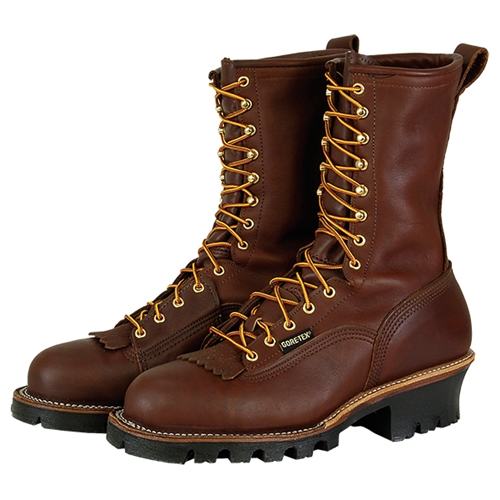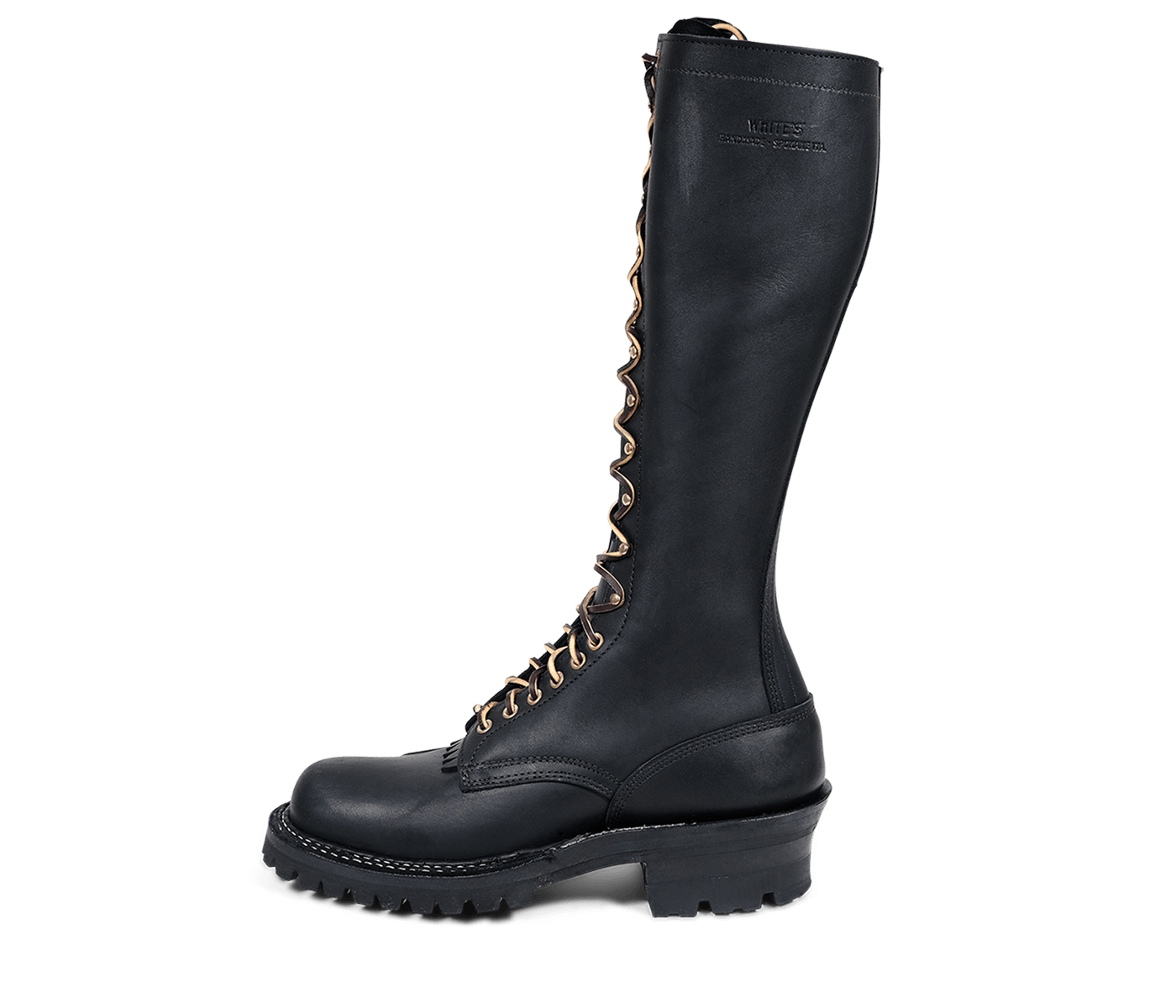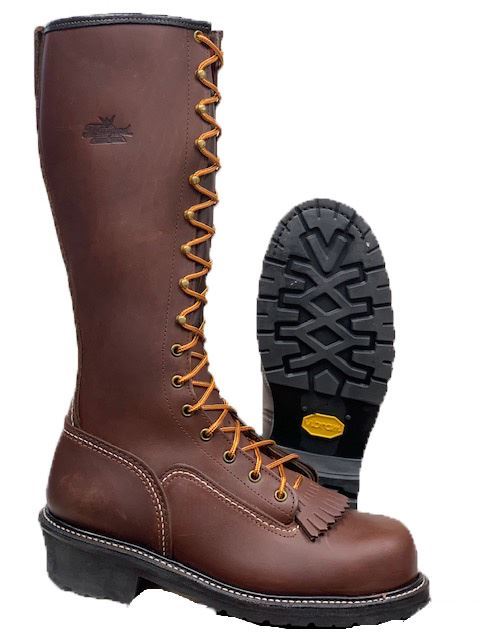Linemen need durable, comfortable, and safe boots. These boots protect them during their demanding and hazardous work.
Linemen face challenging conditions daily, which makes high-quality boots essential. These boots offer protection from electrical hazards, falls, and harsh weather. They also provide support and comfort for long hours on the job. Key features include non-conductive soles, sturdy construction, and excellent grip.
Proper insulation and waterproof materials are also important. Investing in the right pair of boots can prevent injuries and enhance performance. Linemen should prioritize safety, durability, and comfort when choosing their footwear. High-quality boots are not just a piece of gear; they are a crucial part of a lineman’s safety protocol.

Credit: www.linemancentral.com
Importance Of Quality Boots
Linemen face tough working conditions. Quality boots are crucial for them. They need protection, comfort, and support. Let’s explore why quality boots matter for linemen.
Safety Considerations
Safety is the top priority for linemen. They work with high-voltage electricity. Quality boots have insulated soles. This protects against electrical hazards. They also have steel toe caps. This prevents foot injuries from falling objects.
Additionally, these boots have slip-resistant soles. This helps linemen stay steady on wet or uneven surfaces. Safety features in boots save lives.
Comfort And Support
Linemen often work long hours. Comfortable boots are essential. They need padded insoles and cushioned interiors. This reduces foot fatigue during long shifts.
Proper arch support is also important. It helps maintain foot health. Quality boots offer ankle support too. This prevents sprains and injuries.
| Feature | Importance |
|---|---|
| Insulated Soles | Protects against electrical hazards |
| Steel Toe Caps | Prevents foot injuries |
| Slip-Resistant Soles | Prevents slipping on wet surfaces |
| Padded Insoles | Reduces foot fatigue |
| Arch Support | Maintains foot health |
| Ankle Support | Prevents sprains |
Investing in quality boots ensures linemen’s safety and comfort. It makes their job easier and safer. Choose boots with the right features. Your feet will thank you.
Key Features To Look For
Choosing the right boots for a lineman is crucial. Linemen face tough conditions daily. To ensure safety and comfort, boots must have essential features. Below, we explore the key features that make the best lineman boots.
Material And Durability
Boots must be made from strong materials. Leather is the most preferred choice. Full-grain leather is durable and offers the best protection. These boots can withstand heavy wear and tear.
Stitching quality is also vital. Triple-stitched seams provide extra strength. Check for reinforced toe caps. They add extra protection to the boots.
Waterproofing And Insulation
Linemen often work in wet conditions. Waterproof boots keep feet dry and comfortable. GORE-TEX lining is an excellent waterproof material. It also allows breathability.
Insulation is another key feature. Thinsulate is a popular choice for insulation. It keeps feet warm in cold conditions. Look for boots with at least 400 grams of insulation. It ensures warmth without adding bulk.
| Feature | Details |
|---|---|
| Material | Full-grain leather, reinforced toe caps |
| Durability | Triple-stitched seams |
| Waterproofing | GORE-TEX lining |
| Insulation | Thinsulate, 400 grams |
Top Boot Brands
Finding the right boots for linemen can be challenging. The right brand ensures safety and comfort. Below, we explore the top boot brands for linemen.
Popular Manufacturers
Several brands stand out in the lineman boot market. These brands are known for durability and comfort.
- Red Wing – Known for their rugged and durable boots.
- Wesco – Offers high-quality, handcrafted boots.
- Carolina – Popular for their safety features and comfort.
- Thorogood – Known for their reliable and affordable options.
- Danner – Offers lightweight boots with sturdy construction.
Customer Reviews
Customer reviews offer insights into the performance of these boots. Below, we summarize reviews for each brand.
| Brand | Rating | Customer Feedback |
|---|---|---|
| Red Wing | 4.8/5 | Customers love the durability and support. |
| Wesco | 4.7/5 | Highly praised for craftsmanship. |
| Carolina | 4.6/5 | Noted for excellent safety features. |
| Thorogood | 4.5/5 | Great value for money. |
| Danner | 4.4/5 | Lightweight and sturdy. |
Boot Types
Lineman boots come in various types to suit different needs. Understanding these types helps you choose the right pair. Here, we discuss the most common types of lineman boots.
Steel Toe Vs. Composite Toe
Steel toe boots provide excellent protection from heavy objects. They are durable and offer great support. Steel toes are heavier than composite toes. This added weight can be tiring during long hours.
Composite toe boots are made from materials like carbon fiber, plastic, or Kevlar. They are lighter than steel toe boots. They offer good protection but may not be as strong. Composite toes are also non-metallic, making them ideal for environments with metal detectors.
Lace-up Vs. Pull-on
Lace-up boots offer a snug fit. You can adjust them for comfort. They provide good ankle support, which is essential for linemen. The downside is that they take longer to put on and take off.
Pull-on boots are quick to wear. They save time when you are in a hurry. These boots are easy to slip on and off. They may not offer as much ankle support as lace-up boots. Pull-on boots are convenient for quick tasks but may not be ideal for all-day wear.
| Feature | Steel Toe | Composite Toe |
|---|---|---|
| Weight | Heavier | Lighter |
| Material | Steel | Carbon Fiber, Plastic, Kevlar |
| Protection Level | High | Moderate |
| Metal Detectors | Triggers alarms | Does not trigger alarms |
Proper Fit And Sizing
Choosing the right boots for a lineman is crucial. A proper fit ensures comfort and safety. Without the correct size, you risk discomfort and injury. This section will guide you through measuring your feet and addressing common fit issues.
Measuring Your Feet
Accurate measurements are vital for the right fit. Follow these steps to measure your feet:
- Place a blank piece of paper on a flat surface.
- Stand on the paper with your heel against a wall.
- Mark the end of your longest toe.
- Measure the distance from the wall to the mark.
- Repeat for the other foot.
Use the longer measurement when selecting your boots.
Common Fit Issues
Several issues can arise from improper sizing:
- Too Tight: Causes blisters and restricts blood flow.
- Too Loose: Leads to chafing and lack of support.
- Arch Support: Incorrect arch support can cause foot pain.
Here is a table summarizing common fit issues and their solutions:
| Issue | Cause | Solution |
|---|---|---|
| Blisters | Boots too tight | Choose a larger size |
| Chafing | Boots too loose | Choose a smaller size |
| Foot Pain | Incorrect arch support | Use insoles with proper support |
Always prioritize comfort and support in your boots.

Credit: www.jharlen.com
Maintenance Tips
Proper maintenance of lineman boots is crucial for their longevity and performance. Regular care ensures they remain durable, comfortable, and safe. Below are some essential maintenance tips.
Cleaning And Conditioning
Cleaning your lineman boots removes dirt and grime. This prevents material degradation. Use a soft brush to remove loose dirt. Then, use a damp cloth with mild soap to wipe the surface. Avoid soaking the boots in water.
Conditioning keeps the leather soft and prevents cracks. Apply a leather conditioner after cleaning. Let it absorb for several hours. Wipe off excess conditioner with a dry cloth. Conditioning should be done monthly.
Storage Solutions
Proper storage of your lineman boots maintains their shape and prevents damage. Store them in a cool, dry place. Avoid direct sunlight and heat sources. These can cause the material to dry out and crack.
Use boot trees to maintain the shape of the boots. They also help in absorbing moisture. If you don’t have boot trees, stuff the boots with newspaper.
Keep your boots away from chemicals and oils. These substances can damage the leather and reduce the boots’ lifespan.
| Do’s | Don’ts |
|---|---|
| Clean regularly | Soak in water |
| Condition monthly | Expose to direct sunlight |
| Use boot trees | Store near heat sources |
Budget Considerations
When choosing boots for linemen, budget considerations are important. Linemen need durable, comfortable, and safe boots. Balancing cost and quality is key to making a smart purchase. Here’s how to navigate the financial aspects of buying lineman boots.
Cost Vs. Quality
Cost and quality often go hand in hand. High-quality boots may be pricier but last longer. Cheap boots might save money upfront but wear out quickly. Evaluate both short-term and long-term costs.
| Cost | Quality |
|---|---|
| Under $100 | Basic protection, less durable |
| $100 – $200 | Good balance of protection and comfort |
| Over $200 | High durability, maximum comfort |
Finding Deals And Discounts
Finding deals and discounts can help get the best boots at a lower price. Look for sales, coupons, and special offers from trusted retailers.
- Sign up for newsletters from boot manufacturers.
- Check online marketplaces for seasonal sales.
- Join lineman forums for discount codes.
- Consider buying during holiday sales like Black Friday.
With these tips, you can find high-quality boots without breaking the bank. Budget considerations are crucial for linemen. Smart shopping ensures safety and comfort on the job.
Common Mistakes To Avoid
Choosing the right boots for a lineman is crucial. Mistakes can lead to discomfort, injuries, or poor performance. Here are some common mistakes to avoid.
Ignoring Break-in Period
Many people ignore the break-in period for new boots. This is a big mistake. New boots need time to become comfortable. Without breaking them in, you might suffer blisters and pain.
Follow these steps to break in your boots:
- Wear them for short periods at first.
- Gradually increase the time spent in them.
- Walk on different surfaces to flex the boots.
Breaking in your boots ensures comfort and prevents injuries.
Choosing Style Over Function
Some people pick boots based on their style. Choosing style over function can be a big mistake. Lineman boots need to be sturdy and functional.
Here are some features to prioritize:
- Strong toe protection
- Water resistance
- Good ankle support
- Non-slip soles
Always focus on functionality to ensure safety and comfort.
| Feature | Importance |
|---|---|
| Strong toe protection | Prevents injuries |
| Water resistance | Keeps feet dry |
| Good ankle support | Prevents sprains |
| Non-slip soles | Prevents falls |

Credit: shop.whitesboots.com
Frequently Asked Questions
What Boots Do Linemen Wear?
Linemen wear durable, insulated boots with steel toes for safety. Popular brands include Red Wing, Carolina, and Timberland.
Do Lineman Need Special Boots?
Yes, linemen need special boots. These boots offer electrical hazard protection, slip resistance, and ankle support for safety.
What Makes A Boot A Lineman Boot?
A lineman boot features a steel shank, durable leather, high ankle support, and slip-resistant outsoles for climbing and safety.
Should Linemen Wear Steel Toe Boots?
Yes, linemen should wear steel toe boots. They offer essential protection against heavy falling objects and electrical hazards.
Conclusion
Choosing the right boots for linemen is crucial for safety and performance. Prioritize comfort, durability, and protection. Quality boots can make a significant difference in your workday. Remember to invest in trusted brands and read reviews. Your feet will thank you.
Happy working, and stay safe on the job!


